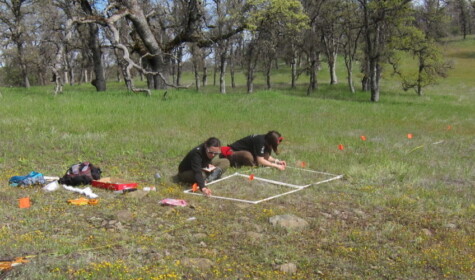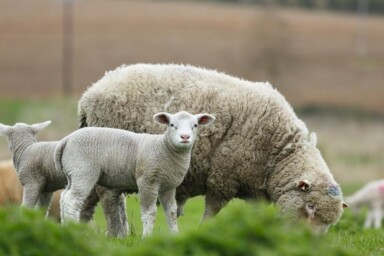Additionality
The basis of BNG rests on the concept of additionality; it requires a 10% increase in biodiversity, compared to the baseline, after the development of the building site. This differs from the ‘no new loss’ principle previously implemented. ‘Additionality’ means that there has to be a clear improvement of biodiversity, demonstrated against Defra’s Biodiversity Metric 3.0. That would mean that the local planning authority would only approve a planning application if the ‘biodiversity value’ of the finished development is greater than the ‘pre-development biodiversity value’ by at least 10%.
However, such a simple percentage point target fails to capture how ecosystems interact together across entire regions to the benefit of biodiversity. And, as the Global Farm Metric project instigated by the Sustainable Food Trust, has found, measuring biodiversity with integrity is a particular challenge. Imagine that you are measuring the biodiversity within a field, you might struggle to record the species that move through it and aren’t always present, such as barn owls or wild boar that have a much greater territory than one field. Similarly, you might struggle to accurately identify (or even capture) the smallest examples of biodiversity, such as invertebrates that might require special equipment, such as a microscope, to be seen. Recognising these challenges, the UN’s Convention on Biological Diversity (CBD) in Aichi in 2013 aimed to settle on a more consistent approach to measuring biodiversity but ended up recommending nearly 100 different indicators due to a complete a lack of agreement between members.
Farming for Biodiversity Net Gain
The Government acknowledges that it might not be realistic to deliver the BNG on site, and so gives developers the option to purchase Biodiversity Credits. This is where farmers and land-managers come into the picture. There is a key role for farmers to play in delivering Biodiversity Credits in the Government’s vision. A farmer would be able to register a parcel of their land to deliver BNG, and the first step would be using Defra’s Biodiversity Metric 3.0 to measure the land’s biodiversity baseline. Once the farmer has demonstrated an ability to deliver BNG and has committed to delivering biodiversity increase on their holding, Government would purchase the Biodiversity Credit from the farmer. These credits would then be made available for developers to purchase through the Government’s BNG marketplace that it aims to launch in the coming year. Any land that is under a BNG agreement must be maintained for a minimum of 30 years.
Land-sparing versus land-sharing
This approach reflects a land-sparing vision that is problematic and suggests that developers can build without consideration for nature and merely ‘offset’ nature elsewhere. This is similar to the offsetting approach that the Government took to carbon emissions, allowing them to be offset through tree planting schemes. However, biodiversity is not like carbon. It is specific to an ecosystem and cannot be transferred elsewhere. Cutting down an ancient woodland in Hampshire to build houses and ‘offsetting’ that destruction with a wildflower meadow in a remote corner of Yorkshire is not equivalent exchange. Instead, Government should be working to prioritise and encourage liveable urban neighbourhoods that require high-value green space to be an intrinsic element within the design, so as to boost urban biodiversity and support other environmental benefits that plants can bring to a city, such as cleaner air, flood mitigation and reduced temperatures. Adopting more equitable and high-value green space across cities and increasing biodiversity within developments would also help mental and physical health, a concern that has been all the more pressing during the COVID-19 lockdowns.
This land-sparing ethos is reflected in the design of the BNG delivery in addition to its conception. The suggestion seems to be that the packets of land assigned to BNG will function solely for biodiversity. This is because it’s easier for researchers within Defra to model the data. This has led to a preference towards rewilding projects on designated areas of land, and so-called ‘sustainable intensification’ on other areas of the holding that focus on food production. However, there is nothing within the legislation that would suggest that BNG could not also follow a land-sharing approach, where biodiversity is increased through farming in harmony with nature, adapting farming systems that give space for nature within them. This could potentially provide a new income stream to farmers and growers to shift over to more agroecological methods – something our environment desperately needs. It would reduce greenhouse gases, increase resilience to extreme weather events and help connect habitats so species can move and the gene pool can remain healthy, tackling the ecological and climate emergencies together.
The agroecological paradox
However, there is a major hurdle that would need to be overcome for a land-sharing approach to BNG to be adopted. As a farmer, the first step in delivering BNG would be to measure your baseline biodiversity, in order to demonstrate what additionality your land might be able to deliver. If you have managed your land in an intensive manner for years with routine applications of pesticides and herbicides, your biodiversity baseline might be very low. Consequently, you would be able to deliver substantial biodiversity gains. However, if you had been managing your farm agroecologically for years, building soil health, your biodiversity baseline might already be fairly high, meaning that you might not be able to increase your biodiversity substantially enough to qualify for a BNG scheme.
This creates perverse incentives where those who have been polluting the environment for years will now have access to funding to reverse the damage they caused, while those farmers who have been mindful of their environmental responsibilities as guardians of the land will, once again, find themselves penalised by the market that fails to adopt a polluter pays principle and internalises the negative externalities of industrial food production.
The Government needs to consider how to correct this issue before the introduction of BNG. Instead of rewarding those who created the problem with biodiversity loss in the first place, Government policy should better champion those land-sharing farmers who have been supporting biodiversity for decades.
Photograph: ‘Quadrat veg analysis’






